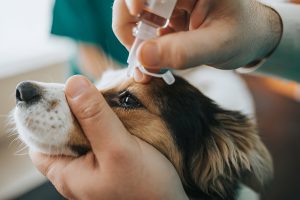Understanding kennel cough dogs common health issues in dogs, recognizing their symptoms, and seeking appropriate veterinary care is crucial for maintaining your pet’s well-being. Here are some of the most prevalent health issues in dogs, along with their symptoms and recommended actions:

Common Health Issues in Dogs, Common Health Issues in Dogs
Common Health Issues in Dogs: Recognizing Symptoms and Seeking Veterinary Care
1. Dental Disease
Dental disease is a prevalent health issue in dogs, often manifesting as periodontal disease. This condition can cause significant discomfort and health problems if left untreated. Symptoms of dental disease include bad breath, inflamed or bleeding gums, and difficulty eating.
If the condition progresses, it can lead to tooth loss and more serious infections that can spread to other parts of the body. Regular dental care, including brushing your dog’s teeth, providing dental chews, and scheduling professional cleanings with a veterinarian, is essential for prevention and management. Early detection and treatment are crucial to maintaining your dog’s overall health and well-being.
2. Ear Infections
3. Obesity
4. Urinary Tract Infections (UTIs)
Urinary tract infections (UTIs) are common in dogs and can cause significant discomfort. Symptoms of a UTI include frequent urination, straining or difficulty urinating, blood in the urine, and increased thirst. Dogs may also have accidents in the house or show signs of pain when urinating. UTIs are often caused by bacteria entering the urinary tract, but can also be related to underlying health issues such as bladder stones or diabetes.
Prompt veterinary care is essential for diagnosing and treating a UTI. Diagnosis typically involves a urinalysis and possibly a urine culture to identify the specific bacteria causing the infection. Treatment usually involves a course of antibiotics to eliminate the infection. Increasing water intake and ensuring your dog has regular opportunities to urinate can help prevent UTIs. Regular check-ups can also help catch and treat UTIs early, preventing complications and ensuring your dog’s comfort and health.
5. Parvovirus
Parvovirus is a highly contagious and potentially fatal viral disease that primarily affects puppies and unvaccinated dogs. The virus targets rapidly dividing cells in the body, especially in the intestines, leading to severe gastrointestinal distress. Symptoms of parvovirus include vomiting, severe diarrhea (often bloody), lethargy, loss of appetite, and fever. These symptoms can quickly lead to dehydration and, without prompt treatment, death.
The virus spreads through direct contact with an infected dog or contaminated objects such as food bowls, leashes, or the ground where an infected dog has been. It is highly resilient and can survive in the environment for months.
Immediate veterinary care is essential for dogs showing symptoms of parvovirus. Treatment typically involves intensive supportive care, including intravenous fluids to combat dehydration, anti-nausea medications, and antibiotics to prevent secondary bacterial infections. There is no cure for the virus itself, so supportive care aims to strengthen the dog’s immune system to fight off the infection.
Prevention through vaccination is the most effective way to protect dogs from parvovirus. Puppies should receive a series of vaccinations starting at six to eight weeks of age, with boosters given until they are 16 to 20 weeks old, followed by regular booster shots throughout their lives.
6. Heartworm
Heartworm disease is a serious and potentially fatal condition caused by parasitic worms (Dirofilaria immitis) that are transmitted through mosquito bites. The larvae travel through the bloodstream and mature into adult worms that reside in the heart, lungs, and associated blood vessels, leading to severe lung disease, heart failure, and damage to other organs in the body.
Symptoms
The symptoms of heartworm disease can vary depending on the number of worms present, the duration of the infection, and the dog’s activity level. Common signs include:
- Persistent Cough: Often one of the earliest signs.
- Fatigue and Exercise Intolerance: Dogs may become easily tired, especially during physical activity.
- Weight Loss and Decreased Appetite: Affected dogs may lose weight and show a decreased interest in food.
- Swollen Abdomen: Due to fluid accumulation from heart failure.
In severe cases, heartworm disease can cause a life-threatening condition known as caval syndrome, characterized by a sudden onset of labored breathing, pale gums, and collapse. Immediate surgical intervention is required in such cases .
Diagnosis and Treatment
Diagnosis of heartworm disease involves blood tests to detect the presence of heartworm proteins (antigens) or microfilariae (immature worms) in the bloodstream. Additional tests, such as X-rays, echocardiograms, and ultrasounds, may be performed to assess the extent of the damage.
Treatment for heartworm disease is complex and requires strict veterinary supervision. The primary treatment involves the administration of an arsenic-based compound to kill adult worms, which is given in a series of injections. Additional medications to kill microfilariae and manage symptoms are often required. Strict rest is essential during treatment to prevent complications from dead worms blocking blood vessels .

Common Health Issues in Dogs, Common Health Issues in Dogs
Prevention
Preventive measures are the most effective way to protect dogs from heartworm disease. Monthly heartworm preventives, available in oral, topical, and injectable forms, can kill heartworm larvae before they mature into adults. Annual heartworm testing is recommended to ensure the effectiveness of the preventive measures and to catch any infections early.
Regular use of preventive medication, combined with routine veterinary check-ups, can effectively prevent heartworm disease, ensuring the long-term health and well-being of your dog.
7. Lyme Disease
8. Cataracts
9. Hip Dysplasia
Hip dysplasia is a common orthopedic condition in dogs, particularly in larger breeds, although it can affect dogs of any size. It is characterized by abnormal development or malformation of the hip joint, leading to instability, inflammation, and eventually, degenerative joint disease. While genetics play a significant role in predisposing dogs to hip dysplasia, environmental factors such as rapid growth, excessive weight, and improper nutrition can exacerbate the condition.
Symptoms of hip dysplasia may vary depending on the severity of the condition but often include stiffness, limping, reluctance to exercise, difficulty rising or climbing stairs, and decreased range of motion in the hips. In severe cases, dogs may experience chronic pain and disability, affecting their quality of life.
Diagnosis of hip dysplasia typically involves a combination of physical examination, palpation of the hip joints, and imaging techniques such as X-rays. Early detection is crucial for implementing appropriate management strategies to slow the progression of the disease and alleviate discomfort.
Treatment options for hip dysplasia aim to improve joint stability, reduce inflammation, and manage pain. Depending on the severity of the condition, treatment may include weight management, controlled exercise, physical therapy, anti-inflammatory medications, joint supplements, and, in some cases, surgical intervention such as hip replacement or femoral head ostectomy.
While hip dysplasia cannot be cured, proactive management can significantly improve the quality of life for affected dogs and help them lead active and comfortable lives. Regular veterinary check-ups, early intervention, and lifestyle modifications tailored to the individual needs of the dog are essential for managing hip dysplasia effectively. By addressing this condition comprehensively, dog owners can mitigate its impact and promote the long-term well-being of their furry companions.

Common Health Issues in Dogs, Common Health Issues in Dogs
10. Kennel Cough
11. Arthritis
Arthritis is a common condition in dogs, particularly as they age, and it involves inflammation of the joints that leads to pain and decreased mobility. The most prevalent form of arthritis in dogs is osteoarthritis, which results from the gradual deterioration of cartilage in the joints.
Symptoms
The signs of arthritis in dogs can vary but often include:
- Limping or Lameness: Dogs may favor one leg or have difficulty moving.
- Stiffness: Noticeable after periods of rest or during cold weather.
- Reluctance to Move: Hesitance to jump, run, or climb stairs.
- Decreased Activity: Reduced interest in physical activities.
- Pain: Dogs may show signs of discomfort when touched or during movement.
Diagnosis and Treatment
Diagnosing arthritis typically involves a physical examination, assessment of the dog’s medical history, and imaging tests like X-rays to evaluate joint damage.
Treatment for arthritis in dogs aims to manage pain and improve joint function. Common treatments include:
- Prescribed Medications: Nonsteroidal anti-inflammatory drugs (NSAIDs) are frequently recommended to alleviate pain and inflammation. Other medications may include pain relievers and corticosteroids.
- Joint Supplements: Glucosamine and chondroitin supplements can help support joint health and slow cartilage degradation.
- Weight Management: Maintaining an optimal weight reduces stress on joints, which is crucial for managing arthritis.
- Physical Therapy: Exercises, hydrotherapy, and massage can improve mobility and strength.
- Alternative Therapies: Acupuncture, laser therapy, and dietary changes might also be recommended to manage symptoms.
Preventive Measures
Preventing arthritis involves maintaining a healthy weight, providing regular exercise to keep muscles strong, and ensuring a balanced diet to support overall joint health. Regular veterinary check-ups can help detect early signs of arthritis, allowing for timely intervention and management.
Proper management and treatment can significantly improve the quality of life for dogs with arthritis, helping them maintain mobility and reduce pain.

Common Health Issues in Dogs, Common Health Issues in Dogs
Recognizing Symptoms and Seeking Veterinary Care for Dogs
Recognizing Symptoms
Monitoring your dog for signs of illness is crucial for early intervention and effective treatment. Common symptoms indicating a need for veterinary care include:
- Changes in Behavior: Increased aggression, lethargy, or anxiety can indicate underlying health issues.
- Eating and Drinking Habits: Loss of appetite, increased thirst, or difficulty eating may signal dental problems, metabolic disorders, or gastrointestinal issues.
- Physical Symptoms: Vomiting, diarrhea, coughing, sneezing, or difficulty breathing are clear signs that your dog needs medical attention.
- Skin and Coat Changes: Excessive scratching, hair loss, redness, or lumps on the skin could point to allergies, infections, or other dermatological conditions.
- Mobility Issues: Limping, stiffness, or reluctance to move might indicate arthritis, hip dysplasia, or injuries.
Common Health Issues
Here are some common health issues in dogs that necessitate veterinary visits:
- Dermatitis (Skin Allergies): Symptoms include itching, redness, and hair loss. Common allergens include food, environmental factors, and parasites like fleas .
- Otitis Externa (Ear Infections): Indicators include head shaking, scratching at the ears, and a foul odor from the ear canal. Regular cleaning and prompt treatment can prevent chronic issues .
- Gastrointestinal Issues: Vomiting and diarrhea can result from dietary indiscretion, infections, or chronic conditions like inflammatory bowel disease. Persistent symptoms require immediate veterinary attention to prevent dehydration and further complications.
- Dental Disease: Symptoms like bad breath, inflamed gums, and difficulty eating can point to dental issues. Regular dental check-ups and cleanings are essential for prevention.
- Obesity: Excessive weight gain and difficulty moving are signs of obesity, which can lead to diabetes, heart disease, and joint issues. A balanced diet and regular exercise are vital for managing weight .
- Urinary Tract Infections (UTIs): Frequent urination, blood in the urine, and pain during urination are common symptoms. UTIs require veterinary-prescribed antibiotics and increased water intake .
Seeking Veterinary Care
Early and regular veterinary care is essential for maintaining your dog’s health. Here are some steps to ensure timely medical attention:
- Regular Check-ups: Annual or bi-annual vet visits help in early detection and prevention of health issues.
- Vaccinations: Keeping your dog’s vaccinations up to date prevents many contagious diseases.
- Preventive Care: Use flea, tick, and heartworm preventatives as recommended by your vet.
- Emergency Care: Seek immediate veterinary help if your dog exhibits severe symptoms like continuous vomiting, difficulty breathing, or collapse.

Common Health Issues in Dogs, Common Health Issues in Dogs
For more detailed information and guidance on dog health issues, you can visit resources like Dogster, The Spruce Pets, and Top Dog Tips .






